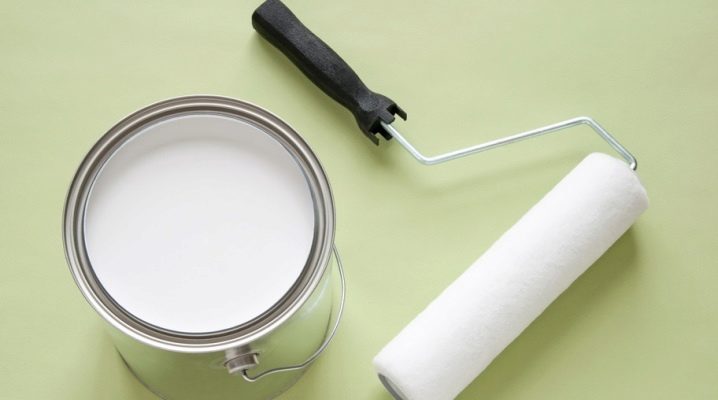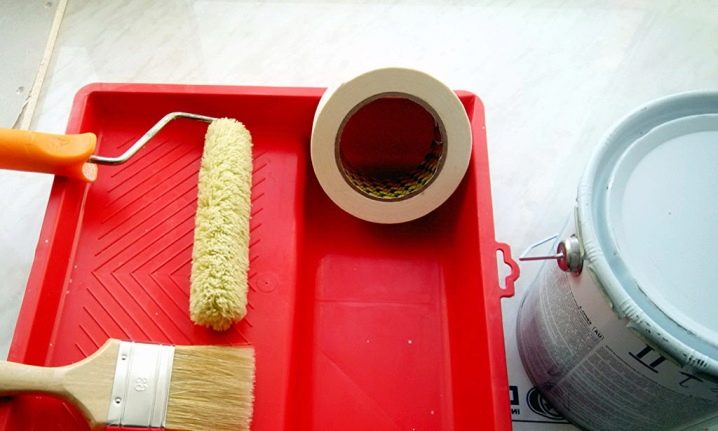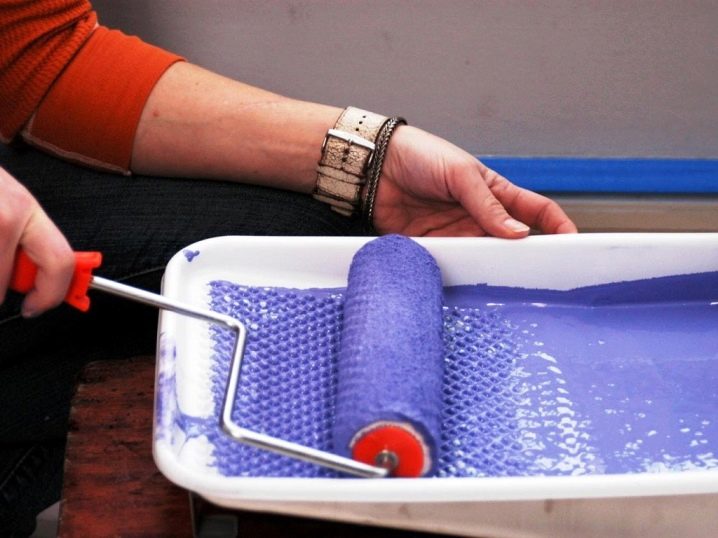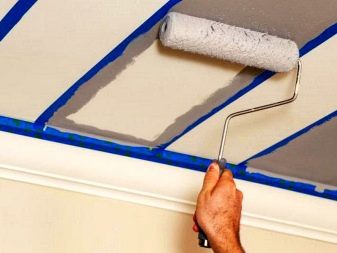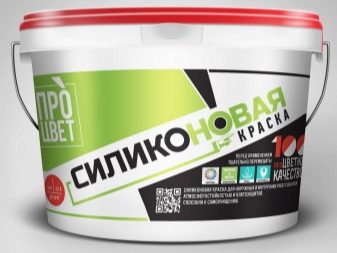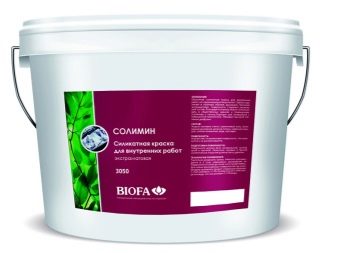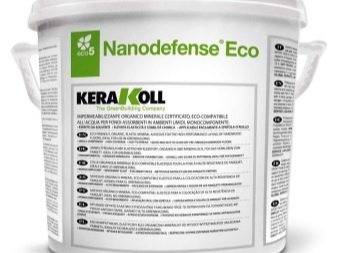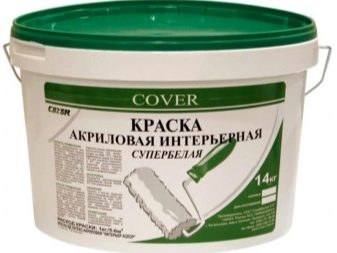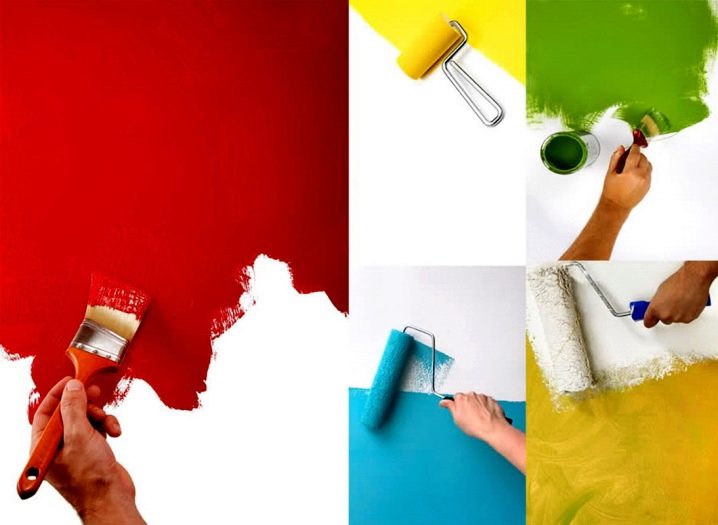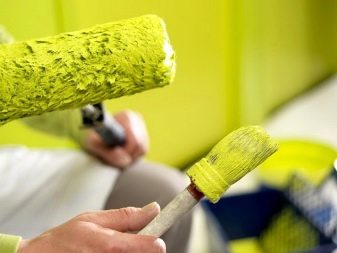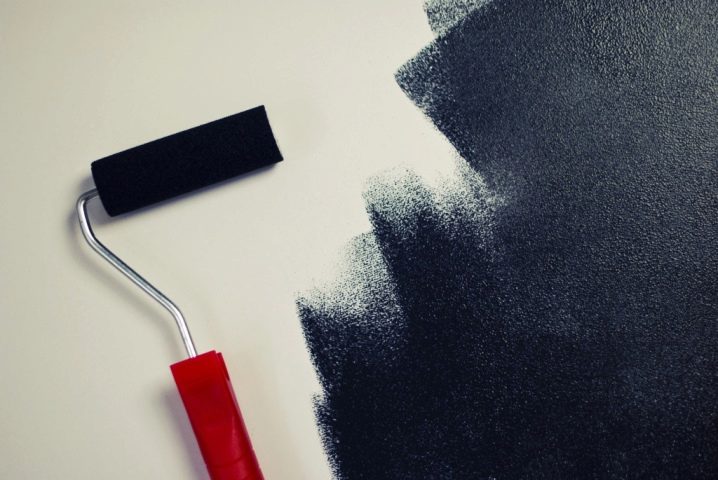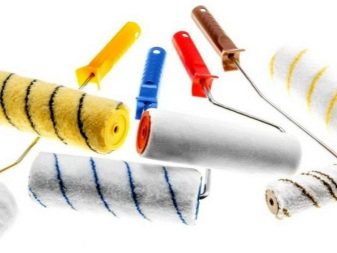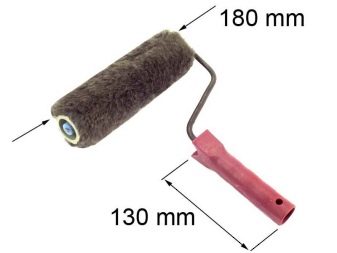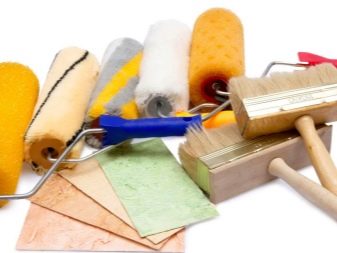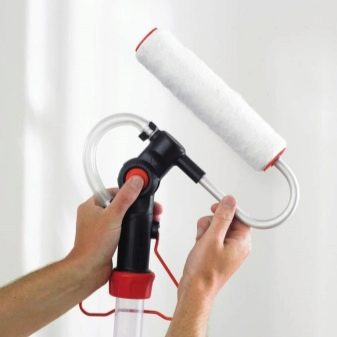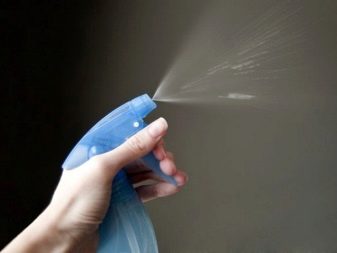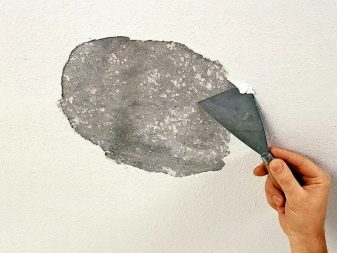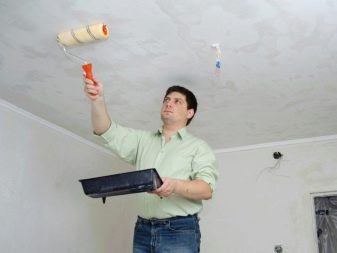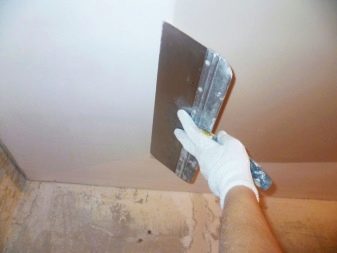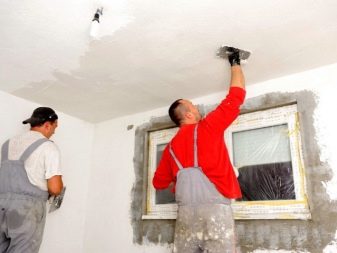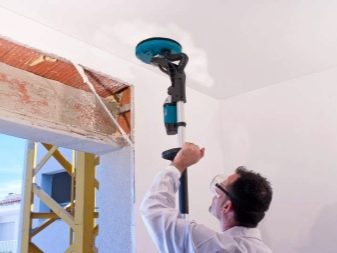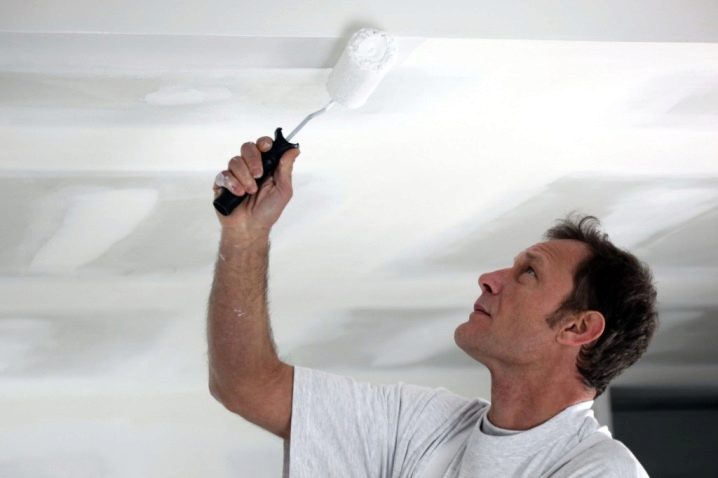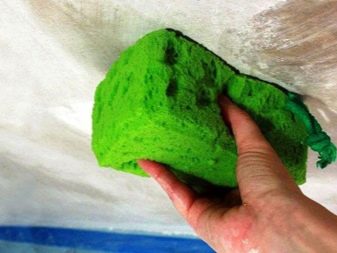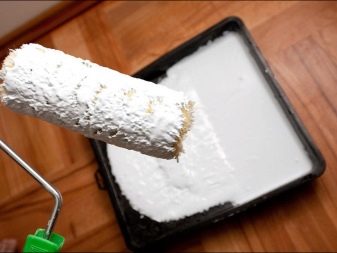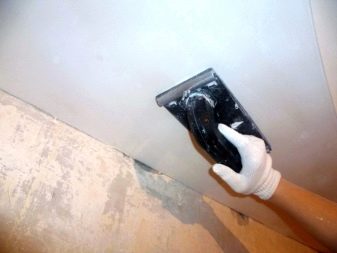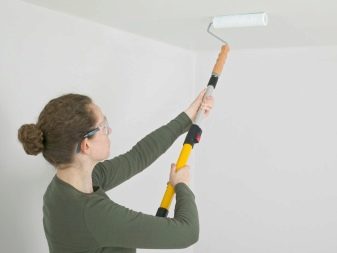How to choose a roller for painting the ceiling with water-based paint?
Repair will sooner or later break into the life of every inhabitant of a modern metropolis, and therefore the choice of attributes for such an event is infrequent. Often the desire to save on building materials leads to unexpected results. Of course, I want to get a quality result: a flat surface, a uniform color - in other words, negligence is allowed only in exceptional cases, and painting the ceiling or walls is just not a situation where you should sacrifice aesthetics in order to save.
How to choose?
The choice of instrument remains mainly for the performer of work. Yet adherents of brushes are less and less. Coloring almost any surface of a room is faster and more conveniently done with a roller, which is quite easy to find in modern hardware stores.With the help of a roller, the paint spreads and is applied to the surface more evenly. In addition, the tool for working with rollers is more technological and practical for use by beginners who do not understand all the subtleties of repair work.
Additionally, it is worth noting that paint consumption in the process of work with a roller is also reduced due to the lack of the ability of the brush to absorb paint, and therefore, part of it is sprayed on the sides - this will inevitably lead to overruns of the coloring composition. With a properly selected roller this will not happen - there will be a clear material savings.
It is better to leave brushes in use for harsh and experienced painters or to paint any specific things with them, and for rooms it is more economical to use rollers. For hard-to-reach places, of course, one cannot do without a brush, but in a typical room color (even stencilled), a roller is an ideal choice.
Another option for a beginner painter is a spray gun, but you can hardly find a stable working model for one repair, and it’s definitely not worth buying a professional option for 2-3 rooms.
But you can try to rent a spray or spray gun for rent - such pleasure is inexpensive and affordable for an ordinary builder.
Paint and roller
It is necessary to understand whether a certain roller is suitable for working with purchased paint or not. The essence of the problem lies in the composition of water-based paint. In the domestic market of building materials, as a rule, several varieties of similar coloring composition are distributed:
- silicone;
- silicate;
- mineral;
- acrylic.
Acrylic water-based paint is used, perhaps, most often. It includes a large amount of acrylic resin and latex. The treated surface is moisture resistant to almost 100% and is not afraid of even a direct impact. This coating can be washed without any consequences for the surface.
The composition of the silicone paint includes a lot of complex synthetic compounds. With their help, the paint easily copes with filling small cracks in the surface with a depth of no more than 2 mm. Most often, such paint is applied to coatings that are very often in contact with water. The only disadvantage of this coloring composition is its high cost.
Mineral water-dispersion paint incorporates cements or a hydroxide form of calcium. This type of water emulsion is ideal for applying to the walls and ceilings of technical premises, where the scale can be really huge, and there is no sense to buy expensive material. The disadvantage of this coating is its fast wear.
Silicate water-based paint in its composition as a key component contains colored glass. Such a coating is most often used for facade work and painting the exterior contour of a building. Such paint can withstand almost any weather conditions during the entire period of operation. Next you need to decide on a roller. Most often in the market of building materials you can find rollers of lint, polyamide, foam rubber or velor.
These four materials are in approximately the same price category, but this does not mean that you can use a roller from any material of this group.
Foam rubber products are mainly used for working with glue and varnish. And to work with water-based paint, foam rubber is certainly not suitable - it is very quickly saturated with dye and ceases to absorb it, because of which there are stains and splashes.Yes, and foam rollers have to constantly change even when working with glue.
Rollers made of lint are better suited for working with water-based paint. Now it is practically impossible to find natural pile in stores, but with synthetic it is much better - on the shelves it is not difficult to find commercials with small, medium and long nap. Of course, the choice here is to do based on their own needs, - rollers with a long pile absorb a lot of paint, but it is much more difficult for a beginner to work with them.
Therefore, if you choose a roller with a nap, it is better to stop at the model with a small or medium lamination.
Products from velor are known for the fact that the material has excellent resistance to the aggressive environment of water-based paint, solvent or varnish. There are no pronounced deficiencies in the rollers of velor, and therefore they are often used for work on large industrial sites, where the use of a spray gun is excluded for some reason. Polyamide rollers are made from raw materials that are similar in properties to textiles.
The peculiarity of the production of such products is thatthat the cushion at the assembly stage is repeatedly stitched with a strong polymer thread - this significantly increases the strength of the product and its service life. At the wide consumer roller of polyamide in the first place. This is especially true of those places where you have to work with acrylic water-based paint.
In the domestic construction markets, replaceable rollers of three serial sizes are most often found:
- up to 100 mm;
- 100-150 mm;
- over 150 mm.
Of course, the choice of the appropriate nozzle is the business of buyers only. It all depends on what size the handle for the drum, and what you need to paint. As a rule, the tool with a long handle is convenient when working in high spaces. The size of the drum is selected with regard to the instrument, and with an emphasis on the task.
No one argues that with a 300 mm reel you can do the work faster, but add here the height of the walls at 4-5 meters, the telescopic handle and the saturation of the drum with paint - and the optimism of the beginning builders disappears immediately, as the hands simply start to tire faster .
Preparatory work
To perform repair work, painters recently prefer not one-time rollers, but the monolithic construction of the drum and byugel (this is the name of the handle and the axis,on which the drum is attached). And instead of a disposable product, covers of various materials are used, which change as needed. The principle of choice here is the same as that of disposable rollers. The materials that are most often used are discussed above.
The most typical situation: plaster from the ceiling crumbled in parts, the corners darkened, but the whole structure has no specific damage and distortions in the horizontal plane. In this case, you first need to get rid of the old whitewash and plaster by wetting the old layer with ordinary water from a spray bottle. To remove it, you must use the usual metal spatula, which is in almost every home.
It is necessary to spray water 10-20 minutes before the start of work, so that it is absorbed, and the plaster peels off more easily.
If there were wallpapers or something similar on the plane, they should also be cleaned together with a layer of glue.
So now there is a clean canvas that needs to be painted. But before you open a can of paint, you need to do a lot more gestures. For successful work with the ceiling in a typical room of a building still Soviet building several layers of primer are used.And the first layer is aseptic. In some cases, the surface is additionally disinfected with chlorine and similar means - here everything depends on the specific situation.
The primer must be compatible with paint. After disinfection, a so-called primer is applied to the surface - a primer polymer composition. After it dries, you can proceed to the putty.
It should be clarified that the polymer primer layer requires several grinding and intermediate procedures. Therefore, it will be correct to strictly adhere to the following sequence of actions:
- Apply a layer of starting putty. Consumption of the composition at this stage is approximately 3 kilograms per square meter. square meter.
- The surface is ground.
- Starter composition is applied to those areas where it was not enough after a rough grinding.
- It is necessary to apply a finishing putty on the surface of the ceiling with a thin layer. Here the consumption of the composition is 1 kilogram per 1 square. meter ceiling.
- Then you need to complete the final surface grinding with emery.
How to paint?
It is necessary to know a few basic rules for painting the ceiling with water-based paint:
- no more than two layers of paint should be applied to the plane;
- the final layer of the coloring composition is applied in the direction from the window opening - so there are more chances to hide all the flaws;
- the entire surface is painted in one run, so that the difference in shades does not appear.
The uniformity of color can be controlled by moving a little to one side. Unpainted areas are better seen with a sidelong glance, and looking at the support it is not always possible to notice the problem on time. Appearing stains on a fresh layer are removed immediately with a special washcloth, after which the place is painted anew. Do not forget that between staining you need to take a long break before the ceiling is completely dry.
Premises up to 15 square meters. meters will require about two liters of water-based paint. Work should be carried out in the daytime. Since the whole process requires the application of two layers, then the whole process can take about 3-4 days, taking into account the drying.
If you want to give the ceiling a shade of turquoise, then you should use a special dye that can be easily bought on the same building materials market. Purchased pigment is simply added to the paint can. It is better to first test the concentration and color saturation on a small section of the working sheet or simply on a cardboard sheet.
Tips and tricks
Below are some guidelines for painting ceiling surfaces. Need to get rid of the influx of paint on time. After removing the clot with a washcloth, which should be reserved in advance, you need to repaint the area with a more liquid composition. In no case do not need to use a thicker substance - so you can ruin all the work.
At the time of the final grinding, it is necessary to walk manually, not only with large sandpaper, but also fine. Any unevenness left on the surface will ruin the whole look of the room afterwards.
For painting with emulsion paint, you should choose a quality paint roller, which is most suitable for its characteristics. They can also whiten the walls.
Use the same type and type of paint for the entire surface. You should not mix two different dyes on the same canvas, as this can be a very unattractive picture. It is best to choose a high quality paint - it can be easily bought in modern building stores.
For how to choose a roller for painting the ceiling, see the following video.
